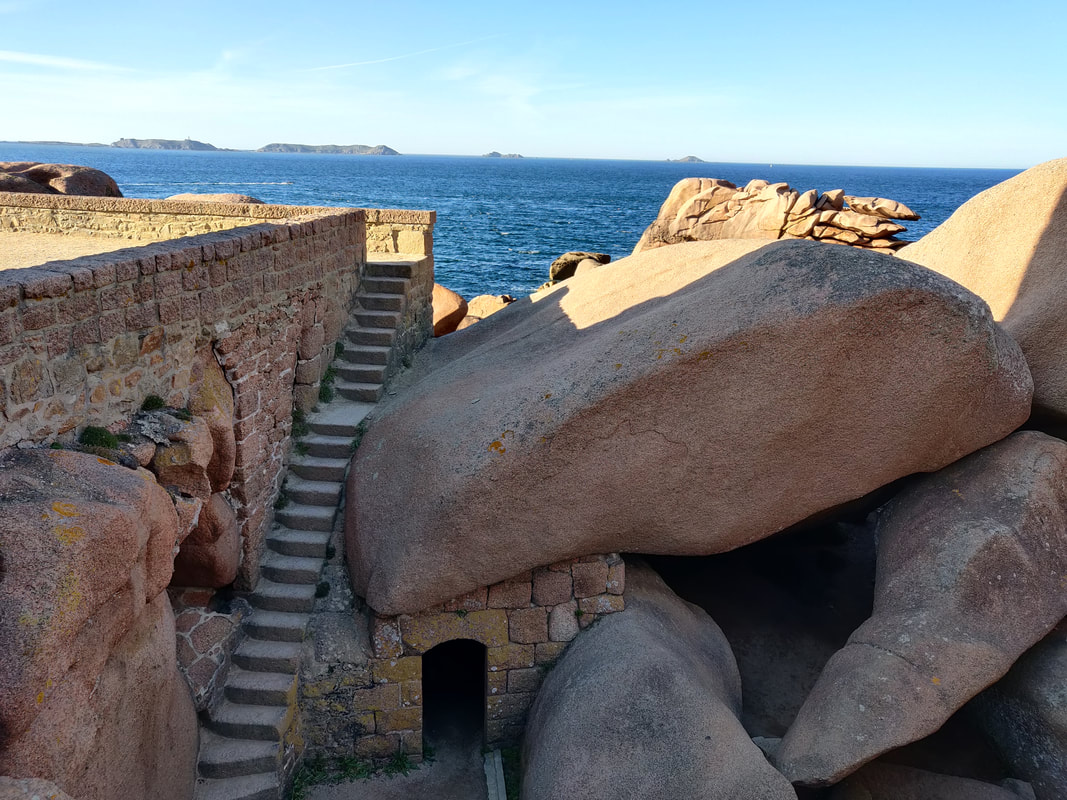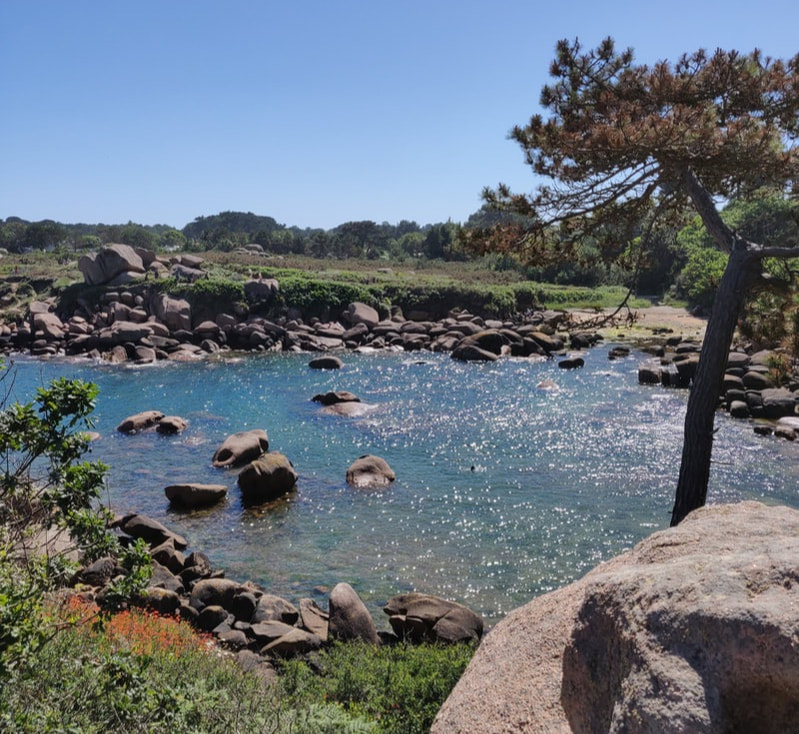SummaryAirport Rating ** (ferry) Reception of locals **** Cost: ££££
A ferry to FranceWhen I was in year 8, we took a school trip to Normandy to learn about the World Wars and also to see the Bayeux Tapestry. Despite being 13 years old, I remember very little about the trip. just bits and pieces here and there. One of the things I do have a bit of memory of is the ferry ride across. I can remember it was a bumpy crossing and I can remember being in awe inside what felt like a moving town in the middle of the English Channel. Ever since then I've wanted to go back to France via ferry, but despite fairly regular trips, they've always been on the Eurostar. So you can imagine my excitement when I had the chance to take a ferry across. At £80 the ferry is cheaper than taking the train and roughly the same price as a plane ticket. Unlike the other two options that can get you into France in a couple of hours, the ferry took 6 hours to make the crossing from Portsmouth to Caen. Coronavirus restrictions meant wearing a mask at all times, and the boat felt really quiet, but the first few hours were really exciting, I felt like the 13 year old all over again. The ferry has everything - restaurants, viewing decks, games rooms (that were closed) and even a cinema. I spent the first couple of hours exploring the boat and watching the English coast disappear over the horizon. After that, well it gets kind of 'samey'. There's only so much open water you really want to see and the average age of ferry passengers would make a bingo hall seem like nursery. It all led to a weird atmosphere where it felt wrong to speak louder than a whisper. In terms of security checks, I didn't have any major issues. On the English-side the car was 'randomly selected' for additional security checks, but these consisted of looking under the bonnet of the car, as well as underneath the car - nothing insane. On the French-side it took about 30 minutes to leave the ferry port as each occupant in every car had to show their passports, but again, nothing fancy or special. Village most preferred by the FrenchThe drive from Caen to Ploumanac'h was just over 3 hours, but a stop off at Mont St. Michel (which I will write about in another article) almost doubled the amount of time. In 2015, Ploumanac'h was voted the 'village most preferred by the French' and it was almost immediately obvious to see why. The village itself is tiny, consisting of a beach area, a port area and a small centre - and my 4 days in the village gave me the opportunity to explore the area. Let's get the obvious out the way first. This probably isn't the place to visit in your twenties or with a whole bunch of friends. It's very quiet, and the lights literally go out at night. You won't find a whole lot to do after 9pm, and if you haven't eaten by 10pm there's a chance you might just go hungry. But if you want a quieter break, this is perfect. Cycling around the village was a good way of seeing it, with a small number of hills. It was particularly handy to go food shopping in the local supermarket (and buying a lot of baguettes and cheese).. Between the beach and the shopping area is the port of Ploumanac'h, a natural harbour where many small sailing boats and fishing vessels are moored. Cycling on the sandy beach on the side of the port wasn't the easiest thing, but it was a lot of fun. The port looked postcard perfect when viewed from the beach, with boats of different colours, shapes and sizes moored together. It weirdly felt more French than even the Eiffel Tower! The food is good too, but for all my vegetarian Sikhs, a word of caution, you might not get a ton of options (but the salads are pretty impressive). The local speciality is Moules Frites, or mussels and chips, and if your diet allows, it's definitely worth checking out. But make sure you book ahead and eat early, because the number of restaurants in the village are limited, and most of the good ones close by 10pm. Ploumanac'h has a small population that is greatly swelled by day-trippers, so while things can get somewhat busy in the day, at night there is almost an eerie quietness. Once the street lights go out around 1am, you might as well be in the wilderness with little to no light pollution and quiet streets. It's the same early in the morning, if you can get up before the day-trippers arrive, it's the epitome of what you'd expect a quiet French village to be like. Life's a beachI've made it clear in previous posts that I'm not really a beach person, so I was a little surprised when I realised how many beaches I've visited all over the world. The beach at Ploumanac'h ranks very favourably when I compare it to others, and that could be partly explained by where I am in life at the moment. Beaches like the Copacabana and Ipanema in Rio were great when I visited in my twenties, as were lively beaches in Ibiza, Marbella, Thailand, Barcelona, Valencia and Miami during Spring Break. But I enjoyed Ploumanac'h beach for the exact opposite reasons that I enjoyed the beaches above - this was quiet. There's a couple of beaches in the village, and compared to beaches in lively tourist destinations, or even to beaches in England, Ploumanac'h was relatively quiet, with more families and a stunning natural landscape. Social distancing wasn't an issue at all here. When the tide comes in, crystal clear water forms an incredible kaleidoscope of colours with the golden beach, the bright flowers, the pinkish rocks and the clear sky. When the tide goes out, the beach extends considerably further, and the receding water leaves behind a different kind of world, with barnacles, seaweed and granite rocks exposed. That's not to say there isn't anything to do. You can paddle board, or take a kayak out, which is exactly what I did for a cost of roughly €10 for an hour. I hadn't kayaked since Thailand 6 years ago, so it was a struggle trying to get the technique but a lot of fun. You can go out a fair distance away from the beach and into the port next to fishing vessels that feel like giants when you're sitting in your kayak. Pink Granite CoastThings like pretty ports and beautiful beaches can be found all over the world, so what makes Ploumanac'h special? It's the Cote de Granit Rose, or the Pink Granite Coast. The walk along the Sentier des Douanier takes you along the coast and is a one hour walk towards the next town of Perros Guirec, an upmarket seaside resort which has a larger beach and is significantly busier. However, it's not the destination but the journey that is most spectacular. It's pretty difficult to tell you why granite rocks, which anywhere else in the world would be considered boring and harsh, work so well here, but they just do. The erosion from the sea has shaped the rocks into objects more beautiful and sci-fi like than any man-made sculptures I've ever seen - the pink hue giving them a beauty I've never really associated with large rocks. As soon as I turned onto the walk, away from the beach, it felt like sensory overload for a split second. Everywhere you looked there was something to see, from idyllic cottages, to ruined chapels and the rocks themselves, each rock larger than a human. My first thought was this looked like a land that time forgot, and felt like the set of the Flintstones. As the walk continued, the rocks got stranger and stranger. You can take detours from the main paths to climb some of the rocks, and one detour took me to the Ploumanac'h Lighthouse, built from the same pink granite you see all around back in the 1860s and marking the entry point into the English Channel. Although it looks ancient, the lighthouse is still in active use. A small staircase on the side of lighthouse leads to a series of boulders, which if you climb give you a beautiful framed view of the Pink Granite Coast. The closer you get to Perros Guirec, the pink granite gives way to a more lush green landscape with deep vegetation embedded in the coastline. The walk isn't particularly taxing and there's only a few steep inclines throughout the whole walk. If the beach or the port don't convince you to come to Ploumanac'h, then the Pink Granite Coast is a must. Is it safe for Sikhs?Yep. Not that I saw any other Sikhs (or South Asians). I can't imagine the locals are overjoyed to see brown people. Bretons are quite insular, and race-based humour is seen as normal. But they don't show any hostility overtly and I certainly didn't get stared at as much, or as intensely, as I have in places like Vienna. The checks on the ferry were a little OTT, with a 'random' security check on the car, and an intense look under the bonnet, the boot and inside and outside of the car. And let's be honest. The demographic here is a little older and middle-class, even if they did show hostility I'm not sure it would be something to scare any Panjabi person coming from cities like Birmingham, Wolverhampton, Derby or London in the UK, or cities in Canada, the US or even the Panjabi motherland. The people were generally respectful of social distancing, and wore masks in greater numbers than they do back home, which is nice to see. I really liked Ploumanac'h, but again, I'm in my early thirties now, a world away from when I first started writing this blog, and the things I appreciate have evolved too. I liked the slow pace of life, a big difference from living in Central London and growing up in the Midlands. I really valued the natural landscape and I enjoyed the different types of food that I'm not accustomed to. 4 days was plenty of time, and I took some excursions that I'll write about in another article. But one thing's for sure, I'll be back here again. Comments are closed.
|
AuthorBritish Sikh, born in the Midlands, based in London, travelling the world seeing new cultures. Categories
All
|







 RSS Feed
RSS Feed